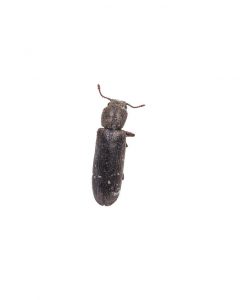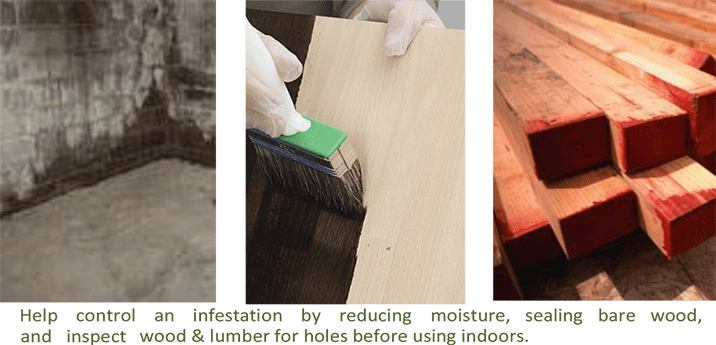Identification and Life Cycle
Powderpost beetles are wood-boring insects that breed in dead wood, untreated dried wood, and cured lumber. Its name comes from the larvae feeding and reducing wood to a very fine dust or powder.
They are very small, 1/8 to 3/4 – inches long, have a flattened shape, antennae, and are reddish to dark brown in color. The two more common species are the Lyctidae and Anobiidae. Mature larvae are “C” shaped and slightly hairy. They have three pairs of small, spinelike legs behind its head, and are a whittish-cream color with a tan head.
They have 3 life cycle stages; egg, larva and pupa. The adult female beetle lays eggs in the pores of untreated wood. The eggs hatch into tiny larvae that bore into the wood as they feed while leaving behind a white powder called “frass”. This matter is composed of very fine particles of wood and fecal pellets, and has a gritty feel to it. Their life cycle may take up to 2 to 3 years to complete.





Comments are closed.